Put on your trousers. If you wear a belt, then put it on and fasten it. This accessory can make trousers shorter.
Now turn the bottom of the pants inside out to the desired length. The back of the pants should completely cover the heel and slightly touch the floor. If you plan to wear trousers with low-running shoes, the classic length of the legs should reach about the middle of the heel. So the trousers will look neat and assemble into an accordion from below.
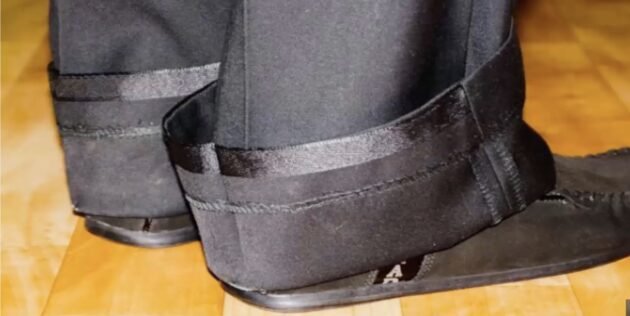
Fix the bends with needles, sewing pins, or make marks directly on the fabric with a small or pointed piece of soap. Then fold the trousers according to the arrows on a table or other flat surface, you can additionally fasten them together with pins.
On one leg, use a ruler to draw a solid line parallel to the factory seam along the label made earlier. Then draw another one from this line, retreating 3-4 cm, which will be needed for bending. Step back from it another 1.5 cm down and draw another line. Do the same with the other leg. To make them the same, make sure that the length of the trousers from the groin to the marking line matches.
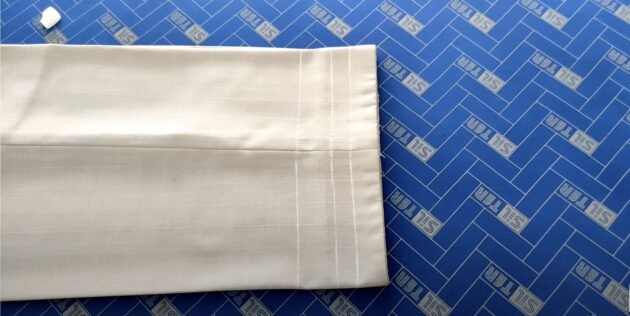
You can do without fitting, if you have trousers that are completely suitable in length. Just fold them according to the arrows and place them on the table on top of the trousers that need to be shortened. Mark the desired length on the fabric with chalk or soap and make the same indents for the bends.
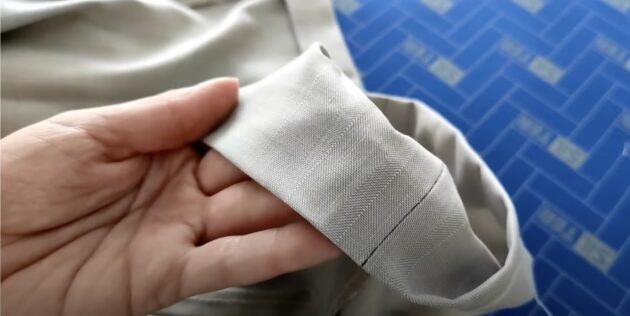
Cut off the extra length of the trousers along the bottom line.
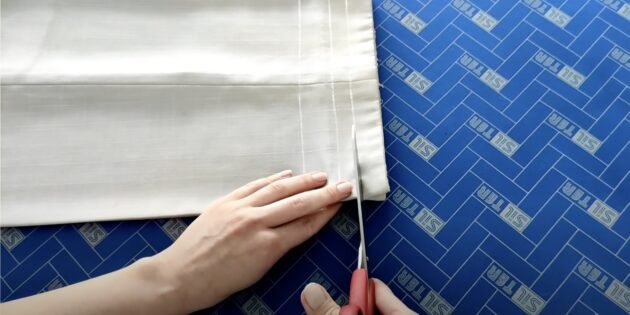
Fold the fabric first along the bottom line and iron it. Then make another turn along the upper line and go through the iron again.
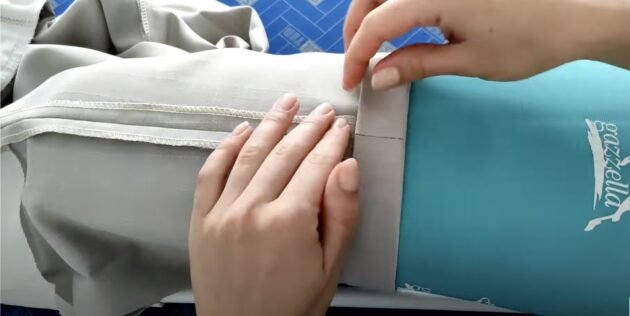
Pick up a thin thread to match the trousers and thread it into the needle. Start sewing from the wrong side of the side seam. Insert the needle into the seam allowance and make a few stitches.
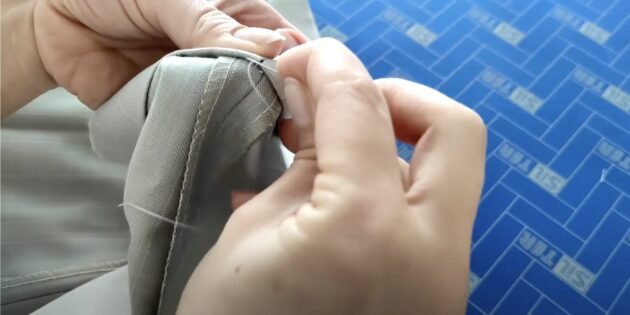
Thread one thread on the trouser leg without piercing the fabric through. Do the next stitch 5-7 mm to the left, threading the fabric of the bend. Next, another stitch, grabbing the thread on the leg, in increments of 5-7 mm. The main thing is not to tighten the seam, it should be free.
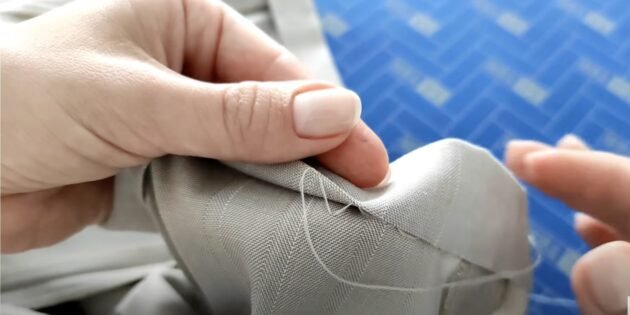
In this way, sew the legs in a circle, and at the end fasten the thread with several stitches and cut it off. Such a seam will turn out neat and almost imperceptible.
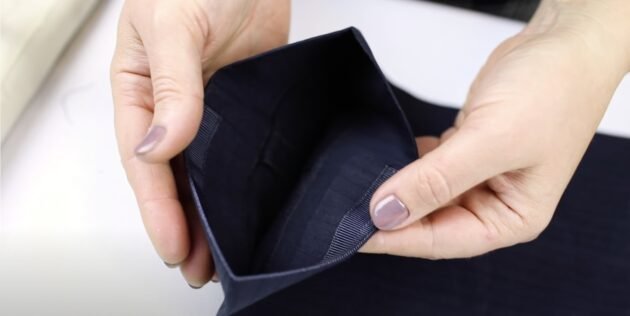
Cut off the excess length of the trousers along the bottom line of the bend. The seams from the inside and outside are carefully spaced to the upper line of the bend by the width of the trouser band.
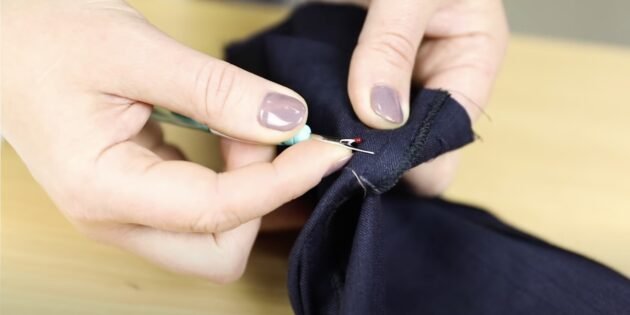
Take a piece of trouser tape. Its length should be equal to the width of the trousers plus 1 cm. Attach the tape to the back of the pant leg from the inside out. Insert the end of the tape into the split side seam at the upper bend line. Sweep it from above with a thread and needle across the entire width of the leg, making arbitrary stitches. Insert the remaining tip of the tape into the split side seam and fasten with a few stitches.
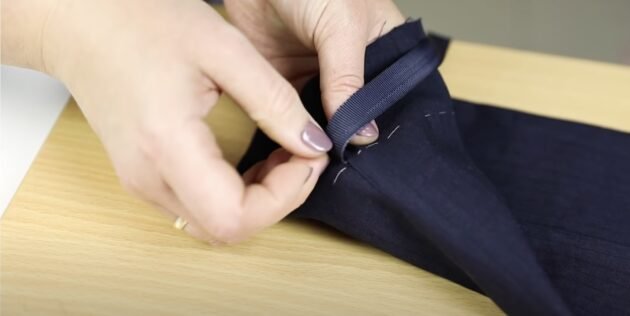
Sew the seams with a trouser band on a sewing machine from the inside out.

Then sew the sewing tape to the fabric of the trousers from above and below.
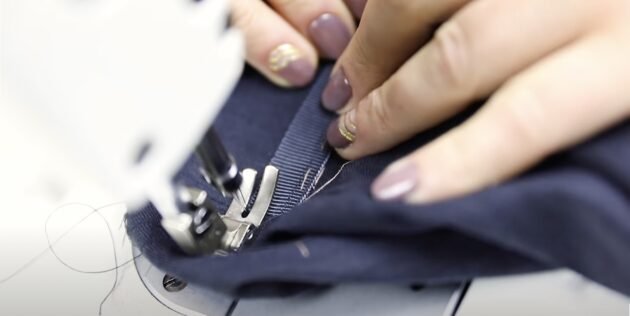
If your typewriter has an "overlock" function, use it to process a cut of trousers. If not, do it manually. This way the work will look neater. Tuck the pant leg from the wrong side along the line of the sewn ribbon and fasten the fabric with pins. Make a basting seam.
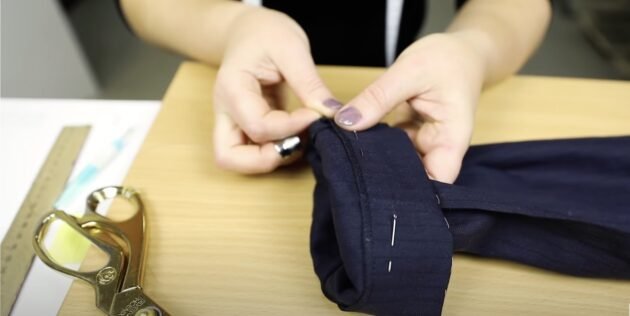
Sew the edge of the trousers from the inside out with a secret seam. And after that, remove the threads of the basting stitch.
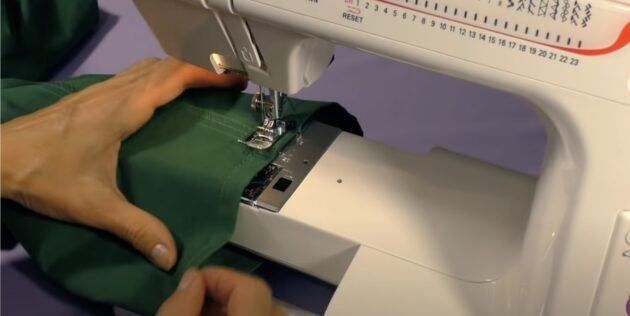
Cut off the extra length of the pants along the bottom line of the marking. Tuck the edge inside the pant leg, and then make the bend again so that its edge coincides with the marking line. Secure this doorway with pins, and then arbitrarily sew the threads by hand, making a basting.
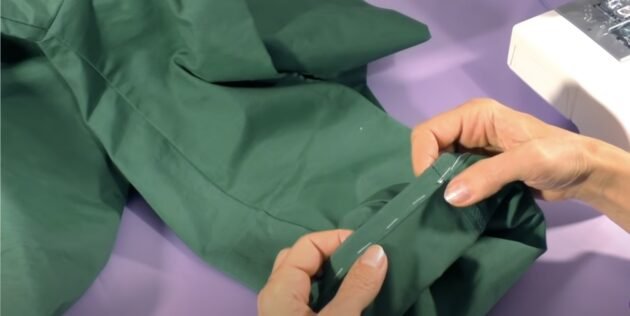
Sew the bend along the basting line on the typewriter. Stitch on the inside using a regular straight seam and an average stitch length. Move from the inner seam and sew the pant leg in a circle.
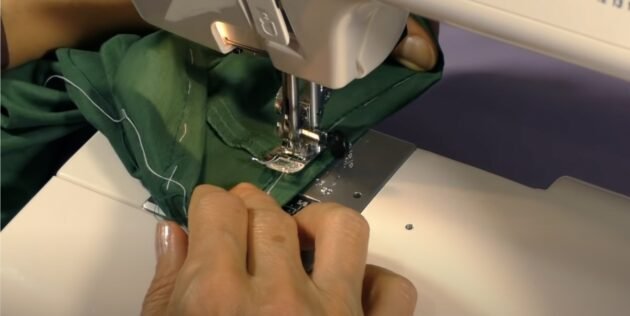
After that, turn the trousers inside out and remove the threads from the basting seam.